At Home Science Experiments
This month is host to British Science Week! Well what's that? It’s a dedicated week to help get kids excited about the joys of science, learn more about specific themes, and overall inspire young minds to get involved.
Here are just a few at home experiments that you and the kids can do together.
Self inflating balloons!
What you will need:
- Balloons
- Baking Soda
- Vinegar
- Measuring spoon
- Funnel
- Empty water bottle
The Science: Chemical Reactions, By adding these two ingredients together we will create a chemical reaction that will result in Co2. the Co2 is what will try to escape and instead fill the balloon creating the illusion it has self-inflated.
Experiment instructions:
Step 1: Use your funnel to add 3 teaspoons of baking soda to each balloon.
Step 2: Now take your water bottle or container and fill it halfway with vinegar
Step 3: Stretch your balloon opening over the hole of your water bottle. Be careful to not tip the powder in yet.
Step 4: Once you have all your balloons set up on their containers you cannot tip the balloons so the powder drops into the vinegar.
Step 5: Give the bottle a swirl to ensure all the powder is in the vinegar and watch the magic of your balloon inflate.
EXTRA Learning step: Ask your kids what will happen with more or less of some of the ingredients and then demonstrate the learning.
Make your own Lava Lamp
What you will need:
- Containers (Mason jar/ water bottle)
- Food colouring
- Baby Oil
- Water
- Alka Seltzer Tablets
- Baking tray (To catch the mess)
The Science: This experiment is all about different viscosity or thickness of the liquid we will be using. We also explore that not all liquids will mix together!
Experiment instructions:
Step 1: Place your baking tray under your jars, this wil catch any excess mess and help with the clean up. You can do multiple jars at once so this is a great experiment if you have multiple children who want to each create their own.
Step 2: For each of your jars fill them with ⅔ oil (You can change these measurements on future versions but we recommend this for your first set as a good base line to measure your results)
Step 3: Fill the jar with the final ⅓ of water followed by a few drops of food colouring. You can chose which ever colour you prefer and kids will most likely want to choose different colours.
NOW DON'T MIX the colours. We want to see how everything will react in the chemical reaction and this shows best when you do not mix the food colouring in.
Step 4: Now it's time to drop your Alka Seltzer tablet into your jar. Be sure to watch as the reaction takes place. You can add more tablets to keep the reactions going. Or stop and go again with new colours and measurements. Be warned the more tablets you put in at once the BIGGER the reaction so make sure you protect all work surfaces.
Expanding Foam
What you will need:
- Hydrogen Peroxide
- Warm Water
- Yeast Packets
- Clear bottles or jars (You could also use cheap beakers from Amazon for the full science experiment look!)
- Measuring spoons
- Food colouring
- Dish Soap
- Baking Tray (To catch the mess)
- Small Cup
The Science: This is a focus on reactions again. Specifically the reaction caused by the yeast and hydrogen peroxide mixing and resulting in the amazing amount of foam we see at the end result.
Experiment Instructions:
Step 1: Add ½ a cup of hydrogen Peroxide into your container alongside your food colouring (You can add as much food colouring as you like!) and a squirt of dish soap.
Step 2: In a separate bowl or cup mix 1 tablespoon of yeast with 3 tablespoons of warm water. (make sure it's warm not cold!) And then stir to dissolve as much of the yeast as you possibly can. Don't worry if it looks clumpy just try to dissolve as much as you can.
Step 3: Time to mix! Take your yeast mixture and pour into the container with the food colouring and hydrogen peroxide. This reaction will happen really quickly so pour as quickly as you can for best results and watch out for the foam!
Now play around with different size containers and amounts of hydrogen peroxide and see what results take place.
These are just a few experiments you can do at home. We hope you and your kids have a ton of fun experimenting at home as much as we did!




-min.png)
-min.png)
